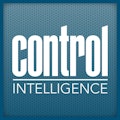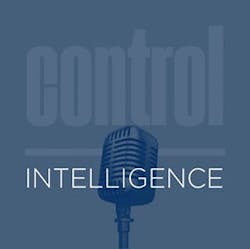Motion-control component roles, types and functions
In this episode of Control Intelligence, written by contributing editor Charles Palmer, editor-in-chief Mike Bacidore discusses the various components in a motion-control system.
Transcript
In any motion-control system, a set of interconnected components is necessary. Two types of control are commonly used—open-loop control and closed-loop control. Each has its own system dynamics and its own pros and cons.
First, let’s talk about system components. Each hardware item has a specific role to play in the overall system concept. The components’ roles, types and functions comprise the system.
Feedback sensors, also known as position or motion sensors, provide real-time information about the actual position, speed and sometimes torque of the motor or the system being controlled. Common types of feedback sensors include encoders, resolvers, potentiometers and Hall effect sensors. Feedback sensors continuously monitor the actual motion and provide feedback to the controller. This feedback is crucial for the controller to adjust and maintain the desired motion, ensuring accuracy and reliability.
The drive is an electronic device responsible for controlling the electrical power supplied to the motor. Drives can be categorized as variable-frequency drives (VFDs), servo drives and stepper-motor drives. Drives take the control signals from the controller and modulate the power supplied to the motor, adjusting factors like voltage and frequency. The drive ensures that the motor operates at the desired speed, torque or position based on the control inputs.
The controller is the brain of the motion-control system, responsible for processing commands, receiving feedback and generating control signals for the drive. Controllers can be programmable logic controllers, microcontrollers, digital signal processors or dedicated motion controllers. The controller receives input commands—or setpoints—specifying the desired motion profile. It compares these setpoints with the feedback from the sensors, calculates any necessary adjustments and generates control signals sent to the drive. The controller ensures that the system follows the desired trajectory or achieves the specified motion goals.
The motor is the primary actuator responsible for converting electrical energy into mechanical motion. Common types of motors used in motion control include dc motors, ac motors, such as induction and synchronous motors, and stepper motors. Motors generate rotational or linear motion based on the applied electrical signals. They provide the mechanical force needed to move loads in the system.
The controller normally has a pre-set speed, which, in control terms, is known as the setpoint or set value. The operator selects this as the required speed. The motion sensor sends a signal to a comparator block within the controller. This signal is then compared to that value chosen by the operator and the difference, or error, is then used to either slow or speed up the motor until the two signals are the same, which is how feedback control works.
The controller sends signals to the drive based on the desired motion profile. The drive modulates the power supplied to the motor according to the control signals. And the motor converts electrical power into mechanical motion, moving the load.
Feedback sensors continuously monitor the actual motion and provide feedback to the controller, which uses the feedback information to adjust the control signals, ensuring that the system maintains the desired motion characteristics.
In an open-loop system, there is no sensor and hence no feedback. The use of feedback sensors in a closed-loop system allows for real-time correction and compensation of errors, improving accuracy and stability. Closed-loop systems are also more robust and can handle disturbances or variations in the load.
When considering the design and setup of an efficient speed-control system, remember the old adage, “A chain is only as strong as its weakest link.” Compromise just one component in the series, and your system will not function accurately.
About the Author

Control Intelligence
A Control Design Podcast
Control Intelligence is a Control Design podcast that goes deep inside the automation and technology that machine builders, system integrators and end users rely on to keep production humming efficiently. New episodes come out every Monday, and download all episodes by Apple Podcasts or Podbean.

Leaders relevant to this article:
